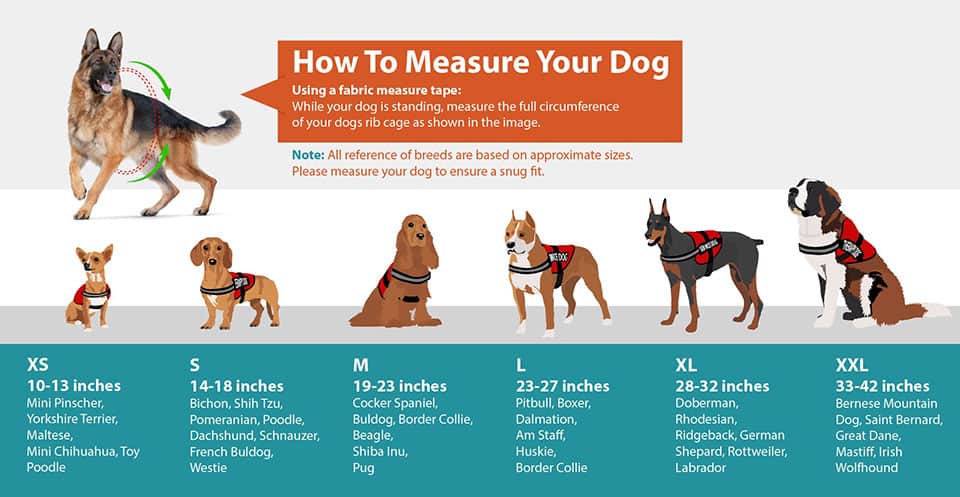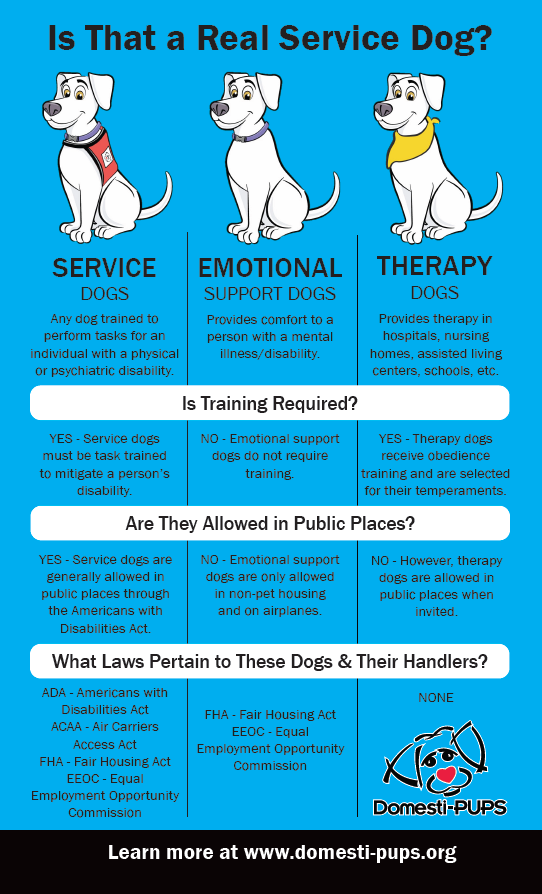To make your dog an emotional support dog, you need to get a recommendation from a licensed mental health professional, register your dog with a reputable agency, and ensure it has the proper training and temperament. Many people benefit from the companionship and support of emotional support animals, which can help reduce stress, anxiety, and provide comfort during difficult times.
If you feel that your dog can provide emotional support for you or someone you know, taking these steps can help ensure that your dog is recognized as an official emotional support animal, providing the necessary support and companionship.

Credit: esacare.com
Choosing The Right Dog Breed
Choosing the right dog breed is crucial when considering making your dog an emotional support dog. Research different breeds, assess their temperaments, and find a breed that aligns with your emotional support needs.
When it comes to making your dog an emotional support dog, one of the most important factors to consider is choosing the right breed. Not all dog breeds are suitable for this role, as some breeds have traits that make them more suitable for emotional support work. In this section, we will discuss how to choose the right dog breed for your needs.
Consider Your Lifestyle
Before diving into the world of emotional support dog breeds, it’s important to take a moment to consider your lifestyle. Different dog breeds have different exercise and activity levels, so it’s crucial to choose a breed that fits well with your daily routine. If you lead a busy lifestyle with limited time for exercise, a low-energy breed might be more suitable. On the other hand, if you are an active individual who enjoys outdoor activities, a high-energy breed could be a great match.
In addition to exercise needs, it’s also essential to think about the size of your living space. If you live in a small apartment or have limited outdoor area, a small or medium-sized dog breed would be ideal. However, if you have a large backyard or a spacious home, you might consider a larger breed. It’s important to ensure that your living space can accommodate the size and needs of the dog breed you choose.
Research Emotional Support Dog Breeds
Once you’ve assessed your lifestyle and living space, the next step is to research emotional support dog breeds that align with your requirements. Different breeds have different temperaments and personalities, so it’s important to find a breed that can provide the emotional support you need.
Begin your research by looking for breeds known for their affectionate and calm nature. Breeds such as Golden Retrievers, Labrador Retrievers, and Cavalier King Charles Spaniels are often recommended as they are naturally empathetic and eager to please. These breeds are known for forming strong bonds with their owners and are generally good with people and other animals.
In addition to considering the breed’s temperament, you should also look into any specific needs or qualities that you require in an emotional support dog. For example, if you have allergies, you may need to choose a hypoallergenic breed. Other considerations could include the age of the dog, whether you prefer a puppy or an adult dog, or if you have any preferences regarding coat type or color.
To make an informed decision, consider reaching out to professional breeders or rescue organizations that specialize in emotional support dog breeds. They can provide valuable insights and assist you in finding a dog that matches your needs and lifestyle.
Remember, choosing the right dog breed is crucial for both your well-being and the dog’s happiness. Take your time, do your research, and ensure that the breed you select aligns with your lifestyle and emotional support requirements.
Assessing Your Dog’s Temperament
Before making your dog an emotional support dog, it’s crucial to assess their temperament to ensure they are well-suited for the role. Evaluating your dog’s compatibility and determining their emotional support qualities are essential steps in this process.
Evaluate Dog’s Compatibility
To begin with, assess your dog’s compatibility with the emotional support dog role. Consider their behavior towards strangers, their response to different environments, and their ability to remain calm in stressful situations. A compatible dog should exhibit friendly, calm, and adaptable behavior, making them suitable for providing emotional support.
Determine Emotional Support Qualities
Next, determine your dog’s emotional support qualities. Look for traits such as empathy, attentiveness, and a comforting presence. Dogs with a natural inclination to provide comfort and reassurance are well-suited for the emotional support dog role. Furthermore, consider their ability to bond closely with their owner and their capacity to alleviate stress and anxiety through their demeanor.
Training Your Dog
Training your dog to become an Emotional Support Dog involves various aspects, including basic obedience training and socialization training. These training methods are crucial in preparing your dog to provide emotional support and assistance in times of need. By following the appropriate training techniques, you can ensure that your dog is well-prepared to handle the responsibilities of an Emotional Support Dog.
Basic Obedience Training
Basic obedience training is essential for any dog, especially those being considered for emotional support roles. This training includes teaching your dog commands such as sit, stay, come, and walking politely on a leash. Establishing a strong foundation in obedience will not only ensure better behavior from your dog, but it will also create a bond of trust and understanding between you and your pet.
Socialization Training
Socialization training is vital for Emotional Support Dogs as they need to be comfortable and well-behaved in different environments and around various people and animals. Exposing your dog to different situations, places, and individuals from an early age helps in developing their confidence and adaptability. This training also helps them remain calm and composed in unfamiliar settings, which is a crucial trait for an Emotional Support Dog.

Credit: www.certapet.com
Obtaining An Emotional Support Animal (esa) Letter
Consult a Mental Health Professional:
A crucial step in making your dog an emotional support animal is to consult a mental health professional. A licensed therapist, psychologist, or psychiatrist will assess your emotional and mental health needs to determine if an ESA is appropriate for you. They will evaluate your symptoms and condition to establish a therapeutic benefit for having an emotional support animal. Your mental health professional will guide you through the process and provide the necessary documentation.
Provide Valid Documentation:
In order to formalize your dog as an emotional support animal, you need to obtain a valid ESA letter. This letter serves as official documentation stating that your canine companion provides you with the emotional support needed to alleviate symptoms of your mental health condition. The letter should include the mental health professional’s credentials, contact information, and their professional recommendation for an emotional support animal. Ensure that your ESA letter is dated and signed to be valid and credible.
| Valid Documentation Checklist: |
|---|
| ✓ ESA letter from a licensed mental health professional |
| ✓ Dated and signed by the mental health professional |
| ✓ Clear identification of the mental health professional’s credentials and contact information |
| ✓ Professional recommendation for an emotional support animal |
By following these essential steps, you can obtain an emotional support animal letter and legally designate your dog as your trusted companion. Remember, the guidance and support of a mental health professional are imperative to ensure the process is legitimate and recognized. Once you have your ESA letter, you can enjoy the benefits of having an emotional support dog by your side, bringing you comfort and providing emotional relief.
Understanding Your Rights And Responsibilities
Making your dog an emotional support dog can be a life-changing decision, both for you and your furry friend. Understanding your rights and responsibilities is crucial to ensure a smooth transition and to provide the necessary care for your dog. Here, we will discuss the legal protection you can seek as an emotional support dog owner and the regulations you need to adhere to. Let’s dive in!
Know Legal Protection
As an emotional support dog owner, it’s important to be aware of the legal protection granted to you and your canine companion. The main legislation that safeguards your rights is the Fair Housing Act (FHA). Under the FHA, landlords are required to make reasonable accommodations for individuals with disabilities, including allowing emotional support animals in housing units where pets are typically prohibited.
Additionally, the Air Carrier Access Act (ACAA) ensures that emotional support animals can travel with their owners in the cabin of an aircraft free of charge. However, it’s essential to note that recent changes have limited the types of animals allowed on flights. Most airlines now only recognize dogs as emotional support animals.
Knowing these legal protections will help you advocate for your rights and ensure that your emotional support dog can accompany you in various settings where they are needed the most.
Adhere To Esa Regulations
While emotional support dogs do not have the same legal rights as service dogs, they still require adherence to certain regulations. To qualify your dog as an emotional support animal, you will need an ESA letter from a licensed mental health professional that states your need for an emotional support animal. This letter provides legal legitimacy and serves as proof for landlords and airlines.
It’s important to note that emotional support dogs are not granted public access rights like service dogs. They are usually only permitted in housing units and on flights. However, some establishments, such as cafes and restaurants, may allow well-behaved emotional support dogs on their premises. Always check with the specific location beforehand to ensure you comply with their policies.
To ensure a positive experience for both you and your emotional support dog, consider the following responsibilities:
- Provide proper care, including regular veterinarian check-ups, a balanced diet, exercise, and plenty of love and attention.
- Train your emotional support dog to behave appropriately in public spaces to avoid any disturbances or safety hazards.
- Respect the rules and regulations of any establishments you visit with your emotional support dog, ensuring their behavior aligns with the requirements.
- Always have your ESA letter handy to provide proof of your dog’s status when necessary.
By adhering to these regulations and responsibilities, you can create a nurturing and supportive environment for your emotional support dog while enjoying the benefits they bring to your life.

Credit: ridgesidek9.com
Frequently Asked Questions Of How To Make My Dog A Emotional Support Dog
Can I Make My Dog An Emotional Support Dog?
Yes, you can make your dog an emotional support dog. However, it requires a recommendation from a licensed mental health professional and proper documentation to qualify for the rights and benefits associated with being an emotional support dog.
What Are The Benefits Of Having An Emotional Support Dog?
Having an emotional support dog can provide numerous benefits. They can offer companionship, comfort, and support, helping to reduce feelings of anxiety, stress, and loneliness. Emotional support dogs are also allowed in housing and can accompany their owners during air travel.
How Can I Get My Dog Certified As An Emotional Support Dog?
Certification is not required for an emotional support dog. Instead, you need to obtain an ESA letter from a licensed mental health professional. This letter states that you have a condition that can be alleviated by the presence of an emotional support animal.
Conclusion
Transforming your dog into an emotional support dog requires patience, dedication, and following the necessary legal processes. By ensuring your dog’s suitability for the role, obtaining a recommendation letter from a mental health professional, and completing the required documentation, you can provide the support and companionship needed by those struggling with mental health issues.
Remember, the journey may have its challenges, but the rewards of having an emotional support dog are immeasurable for both you and your furry friend.



